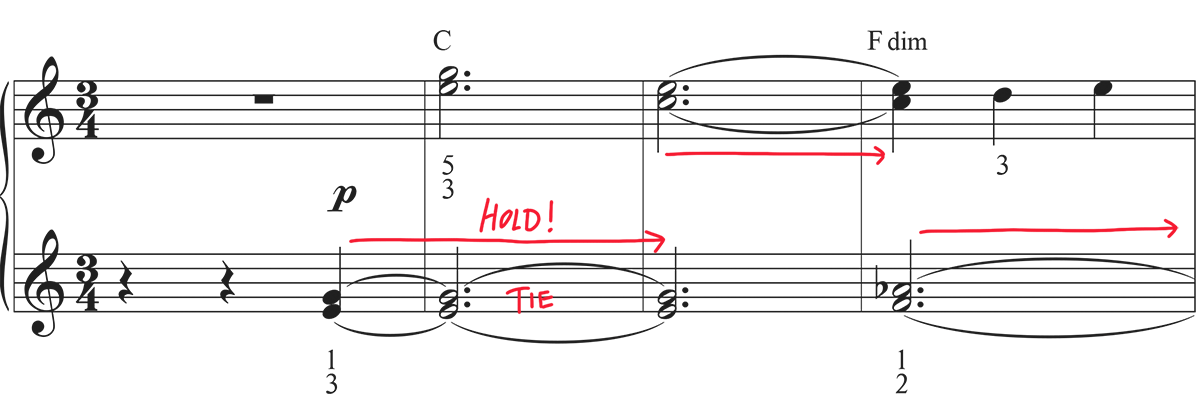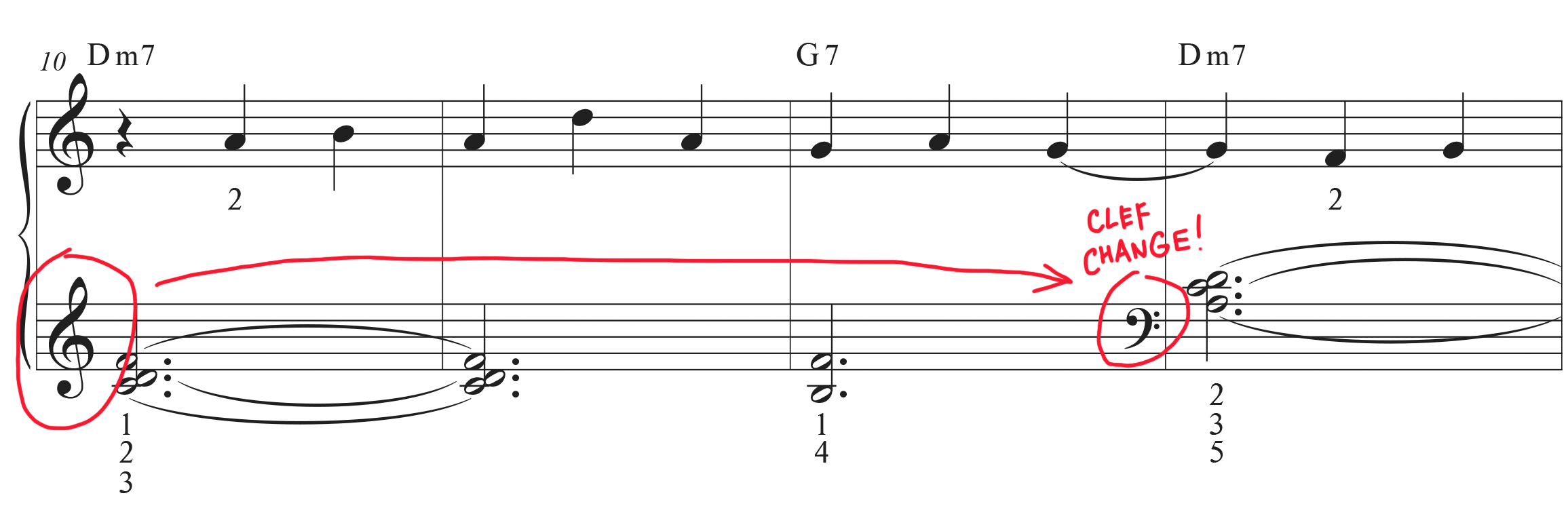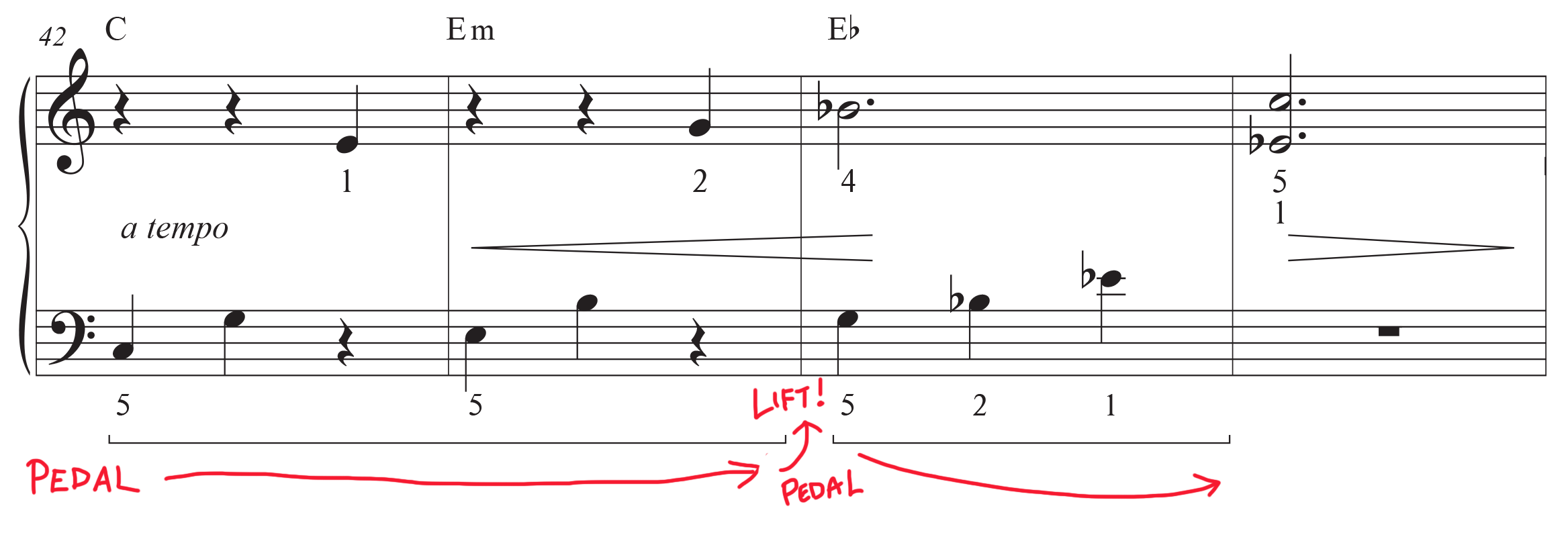“Clair de Lune” is an iconic piano piece. It’s beautiful, recognizable, and oh-so peaceful. The original “Clair de Lune” sheet music by Claude Debussy isn’t easy, so we’ve created an easier version that anyone, even beginners, can share in the joy of this amazing piece.
Watch our video tutorial for a step-by-step guide on how to play “Clair de Lune” and keep reading for some tips and tricks.
Table of Contents:
Inspiring tutorials. Fascinating articles. Exclusive interviews. We create piano content anyone, anywhere can enjoy for free. Don’t miss out, sign up for more free lessons.
The original “Clair de lune” sheet music by Claude Debussy isn’t easy. So we’ve created a more accessible arrangement in C major. Download it for free!
If you want to take a crack at the original (warning: it’s got five flats!), you can find it on IMSLP, an online library of free sheet music for classical pieces that are in the public domain.
Watch out for the very many ties in this piece! Ties simply mean notes “tied together” are held for the full duration of all notes tied. There are lots of moments in this song where you hold onto notes and “save them for later.”

Also watch out for changing clefs throughout the sheet music! For example, in the beginning, we use a treble clef for both the right and left hand. The piece starts off pretty high, so it’s much easier to read everything in treble clef.

However, we switch back to bass clef in measure 13. Things switch back to treble clef in the last two measures!

Love classical music but not sure where to start? Head over to Classical Piano Quick Start, four free lessons designed for beginners taught by Victoria Theodore. Victoria is a classically trained pianist with degrees from Oberlin College and Stanford University, and has played with Beyoncé and Stevie Wonder. Start your classical journey with Victoria today!
You’ll notice some pedal markings in this piece. They look like this:

The pedal is what creates that cloudy, dreamy sound that “Claire de Lune” is famous for.
There aren’t pedals everywhere, though, because the ties sort of imitate what the pedal does by holding those chords. However, I personally pedal throughout the song 🤭! I just think it sounds extra pretty 💖
You can learn more about pedaling techniques over here.
📜🎹 HISTORY BITE! “Clair de Lune” is the third of a suite of piano pieces (Suite Bergamasque). Although “Clair de Lune” is famous for being an “Impressionist” piece, Debussy disliked the impressionist label. He was actually inspired by 17th and 18th century Baroque French music.Pieces like “Clair de Lune” are allllll about emotional expression!
So don’t be afraid to let your dramatic side fly! There are dynamic markings to help you along, and if you’re new to musical terms, here’s what they mean:

Piano
Play softly.

Forte
Play loudly.

Ritardando
Gradually slow down.

A Tempo
Play at the original tempo.


Crescendo and Decrescendo
Gradually play louder (right; crescendo) or gradually play softer (left; decrescendo).
At the end of the day, play this piece in a way that feels right for YOU! If you want to pedal a lot, great. If you prefer not to pedal, that’s okay too.
We want you to have fun with this iconic piece in whichever way suits you!
Classical music sounds stunning on the piano, but if you’re intimidated by unabridged versions of your favorite classical pieces, don’t worry! We have LOTS of easy sheet music for pieces beyond “Clair de Lune.” Check out some of our other lessons:
Happy practicing!
Lisa Witt has been teaching piano for more than 20 years and in that time has helped hundreds of students learn to play the songs they love. Lisa received classical piano training through the Royal Conservatory of Music, but she has since embraced popular music and playing by ear in order to accompany herself and others. Learn more about Lisa.
/marketing/pianote/promos/april/banner-bg-m.webp)
We use cookies for traffic data and advertising. Cookie Policy »
/marketing/pianote/promos/april/banner-title.webp)